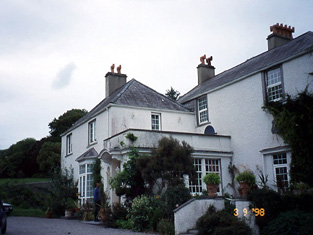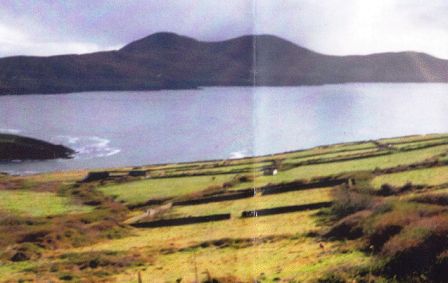Corabeg House
Houses within 10km of this house
Displaying 8 houses.
Houses within 10km of Corabeg House
Displaying 8 houses.
| House name | Description | |
|---|---|---|
| Aghagadda House | James O'Connell was in possession of this property, valued at £10 15s, at the time of Griffith's Valuation, when the house was vacant. In 1837 Lewis notes Ahadda as the seat of Rev. Mahony. Leet refers to Richard Mahony residing at Portmagee in 1814. Bary states that the house was built by the Mahonys who resided there in the early nineteenth century. It seems to have become the home of Charles O'Connell, son-in-law of Daniel O'Connell, for a time in the 1850s. Later it was occupied by members of the Spotswood family of Valentia. It is now a ruin. | |
| Aghanboy | Mary Bourke was leasing this property valued at £5 from Col. Thomas Bourke at the time of Griffith's Valuation. It is not named on the 1st edition map though buildings are shown. Leet records Ahanebee as the seat of Captain Burke in 1814. Buildings are still extant at the site. | |
| Waterview | Frederick Blennerhassett was leasing this property to Patrick Trant at the time of Griffith's Valuation, when it was valued at £6 15s. Both Lewis, in 1837, and Leet, in 1814, refer to it as the residence of P.Trant. Bary quotes O'Donovan that Waterview was built by Captain Trant in the early years of the nineteenth century. It remained a residence of the Trant family until the middle of the century when it seems to have been bought by the O'Connells. It was sold to the Moriarty family in 1927 and is still standing and inhabited. | |
| Kilkeaveragh House | Frederick Blennerhassett was leasing this property to Francis Chute at the time of Griffith's Valuation, when it was valued at £13. Lewis notes Kilkeaveragh House as the seat of Reverend J. Maunsel in 1837. Bary quotes O'Donovan who claimed that Francis Chute had built this house in 1836 but it is possible that he renovated an earlier property. The house is described as "in ruins" on the 1895 OS Map but there is a house labelled Seamount a short distance away, which Bary states was built by the Blennerhassetts and is still extant. Details of ground plan of Kilkeveragh House are held in the National Library of Ireland, Ms.13,631(7). | |
| Belville (Iveragh) | James Butler was occupying this property at the time of Griffith's Valuation, when it was valued at £9 15s. Both Lewis, in 1837, and Leet, in 1814, record it as the seat of Whitwell Butler. Bary states that it was probably built by Whitwell Butler in the late eighteenth century. In 1906 the property was owned by Arabella Butler and was valued at £8 5s. It continued to be used by the family until the end of the twentieth century but is now unoccupied and in poor repair. |

|
| Valentia Slate Quarry | Berwick Blackburne was leasing the slate quarry and associated buildings at Dohilla, Valentia, from the Knight of Kerry at the time of Griffith's Valuation. The buildings were then valued at £26 15s. The quarry was opened by the Knight of Kerry in 1816 and contributed slate to many of the Victorian period's most farmous building projects, including the Houses of Parliament at Westminster. It closed in the twentieth century but was re-opened in 1998 and is still working. | |
| Glanleam | Glanleam was the home of the Knight of Kerry in Valentia. Tradition claims the property was first built in the eighteenth century as a linen mill, which was later remodelled as a house. In 1837 Lewis mentions it as the "beautiful seat of the Knight of Kerry". At the time of Griffith's Valuation, it was valued at £31. In 1906 it was still the property of the Knight of Kerry and valued at £75. In 1943 the Irish Tourist Association survey noted that it was the owned by Lord Monteagle. It is still extant and now operates as a luxury guesthouse, famous for its tropical gardens. |

|
| Ballynabloun House | In the 1850s this townland was held by Charles O'Connell, son-in-law of Daniel O'Connell. Local sources suggest he built this house around 1840. The house here was valued at £7 10s at the time of Griffith's Valuation. It was sold in the 1900s by Charles O'Connell's son, Daniel and thereafter demolished. The site of the walled garden is still visible. |

|

